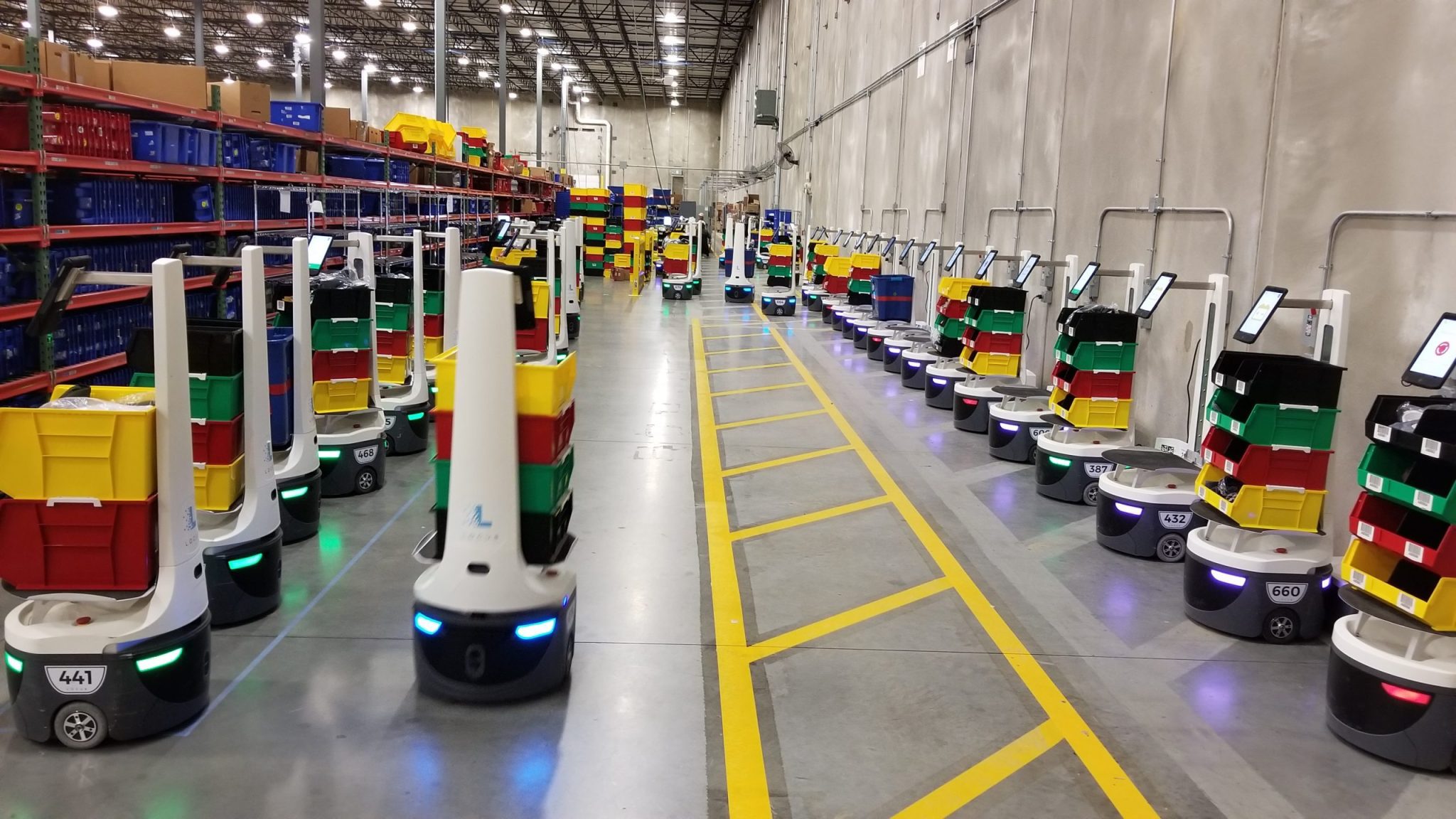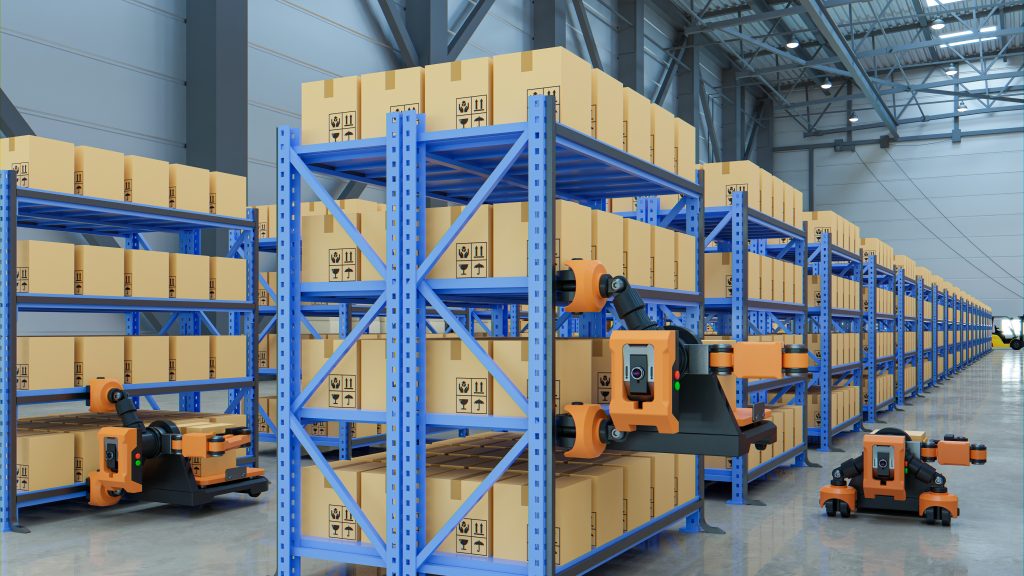Despite what many people think, you don’t have to be as big as Amazon to implement robotics into your business. You don’t have to settle for lower-performing technology, either. Robotics never seemed feasible or financially justifiable for smaller warehouses, but factors such as labor availability and increasing productivity build a strong business case for exploring robotic solutions.
The pandemic has brought a heightened awareness of the value of the supply chain and the impact of disruptions. Organizations eager to build resilient supply chains are now more willing to invest in automation and robotics. Robotics is more affordable thanks to technological advancements and more robotic providers entering the material handling market.
Integrating robotics in warehouses and distribution centers is now feasible, no matter the size of your operation. Not only will this technology help improve material handling KPIs, but it also addresses the labor challenge. With so many warehouses and distribution centers still lacking in automation, those who adopt automation and robotics will hold considerable advantages over those who don’t.
Robotic Options for Warehouses
When you think of robots, you might imagine massive machines in factories or perhaps vehicles scuttling around autonomously. However, the reality is that robots are becoming increasingly present in our everyday lives. From Roombas to robotic lawn mowers, these devices are becoming increasingly sophisticated.
As Christopher Mims details in his book, Arriving Today, “It’s the flexibility of robots, especially modern ones, that makes them so useful.” Today’s robots have “powerful but energy-sipping digital brains, robust wireless connections to the cloud, energy-dense and fast-charging lithium-ion batteries, powerful and compact electric motors, and a surplus of inexpensive sensors that, with only a software update, can enable new capabilities and new modes of operation as engineers dream them up.”
This flexibility means robots can adapt to an ever-increasing range of tasks. Whether picking orders or unloading trucks, there’s virtually no limit to what these machines can do. And as they become more advanced, we’ll likely see even more applications for robotics in the years to come.
Warehouse Labor Shortages and the Need for Speed
The growth of e-commerce has increased the need for warehouses and distribution centers. Unfortunately, the growth has outpaced labor availability, resulting in higher wages and a heightened sense of urgency to find a solution. The pandemic exacerbated the labor shortage as people are reluctant to work close to others, and many are still working from home.

As the CEO of Locus Robotics, Rich Faulk has a lot to say on the future of robotics and automation – and he’s optimistic. He believes there’s still a vast untapped market for robotics and automation in warehouses across the globe. In fact, he estimates only around 5% of warehouse space is currently using these technologies. The remaining 95% equates to billions of existing square feet and billions more being built that could be using robotics and automation to improve efficiency and productivity.
Humans and robots are working side by side more than ever in warehouses and other industrial settings. The robots are designed to work with and complement the abilities of people, making the overall process more efficient. This allows companies to get the most out of their staff, while also increasing safety and reducing errors.
The rise of robotics and automation has led to many people fearing that they will be replaced by robots in the workforce. However, this is not the case. Robots perform jobs that are monotonous, repetitive, and strenuous- jobs that others do not want to do.
According to Faulk, Amazon is one of the fundamental driving forces behind growth in robotics. The online retail giant has invested heavily in automation and set high standards for shipping speed and accuracy – standards other companies have to match if they want to stay competitive. As a result, Amazon has become one of the most powerful marketing tools for implementing robotics and automation in warehouses.
Calculating ROI for Warehouse Robotics
When it comes to justifying the purchase of robotics or investing in automation projects, most businesses want to know the return on investment (ROI). The ROI will vary depending on the type of robot purchased, the tasks it will be performing, the automation level of those tasks, and the problem you are trying to solve.
While ROI remains a primary factor for investing in automated solutions, other factors have become even more critical under the current market conditions. The current environment has put massive pressure on every link of the supply chain to operate leaner and meaner. The silver lining is this provides an opportunity to invest in automated solutions that will future-proof your business. Let’s face it, the pandemic has been a reality check for everyone and has forced companies to adopt new technologies at an unprecedented pace. We see first-hand how those who haven’t invested in automation are at a competitive disadvantage.
That said, there are some general tips you can follow to help calculate ROI for robotics:
- Establish a baseline based on the current operating conditions at your facility. Robotic solutions increase productivity, picking accuracy, and overall efficiency. You should have a good idea of where you are and where you want to be.
- Estimate how much time and money a robot will save per task. What problem are you specifically trying to solve?
- Factor in any additional costs associated with implementing robotics (training, maintenance, etc.).
- Compare the cost of the robot against labor costs to do the same task.
- Assess how long it will take for the robot to pay for itself.
Shopping for Robots
Robot shopping doesn’t sound like work to me. It sounds like a boyhood dream come true. If this is your organization’s first foray into robotic technology, looking for a vendor can be somewhat intimidating.
There are a few different ways to find the right vendor to supply robotics and automation solutions for your warehouse. One way is to research online and check out vendor exhibits at trade shows, like ProMat 2023. Many vendors also have demos of their products online or at their facilities so that you can see them in action.
Another way to find the right vendor is to use consultants and integrators. The benefit of using consultants and integrators is they have experience implementing automated solutions and offer solutions from multiple vendors instead of vendors who will be pushing their products. Warehouse automation consultants and integrators understand timelines and the project’s scope and can help manage the project from beginning to end. This is an excellent option for warehouses that do not have the knowledge base or internal resources.
When selecting a vendor, look for one who takes the time to look at your operation to help identify the best solution for your needs. You’re looking for more of a partner than a vendor.
The best partners will:
- Have experience with the type of product you want to move
- Take the time to understand your business needs and what you are trying to accomplish
- Design a system to meet your throughput goals
- Help select and install the solution for your application
- Train your staff on how to use and maintain the robots
- Provide post-deployment support
Issuing a Request for Proposal (RFP)
When it comes to finding the best fit for robotics and automated solutions, one of the best strategies is to send out a request for a proposal (RFP). If you are unfamiliar with an RFP, it is a formal process allowing vendors to submit bids for a project. By doing this, you can get a detailed overview of your specific situation and requirements from vendors, who will then be able to offer their solutions to your problem. Not only does this help narrow down the field of potential candidates, but it also brings in unique and innovative solutions you may not have thought of before. In other words, an RFP can be an insightful and effective tool in your search for the perfect robotics or automation solution.
The RFP should include:
- A description of your business and the problem you’re trying to solve
- The scope of work you’re looking to have completed
- Your budget for the project
- The timeline for the project

The Future of Warehouse Robotics
Automation and Robotics are no longer just for big companies like Amazon and Walmart with a giant network of DCs. These days, there are plenty of ways for warehouses and distribution centers of all sizes to find the right robotics solution for their needs. And the benefits are plenty: from improved efficiency and accuracy to reduced costs, warehouse robotics is the future of logistics. We will likely see more innovative solutions for automating warehouse tasks as technology advances. Furthermore, as the industry becomes more competitive, companies will be forced to adopt these solutions to stay ahead of the curve. So, if you’re looking for a way to improve your warehouse operation, start by investigating what robotics and automation can do for you.


